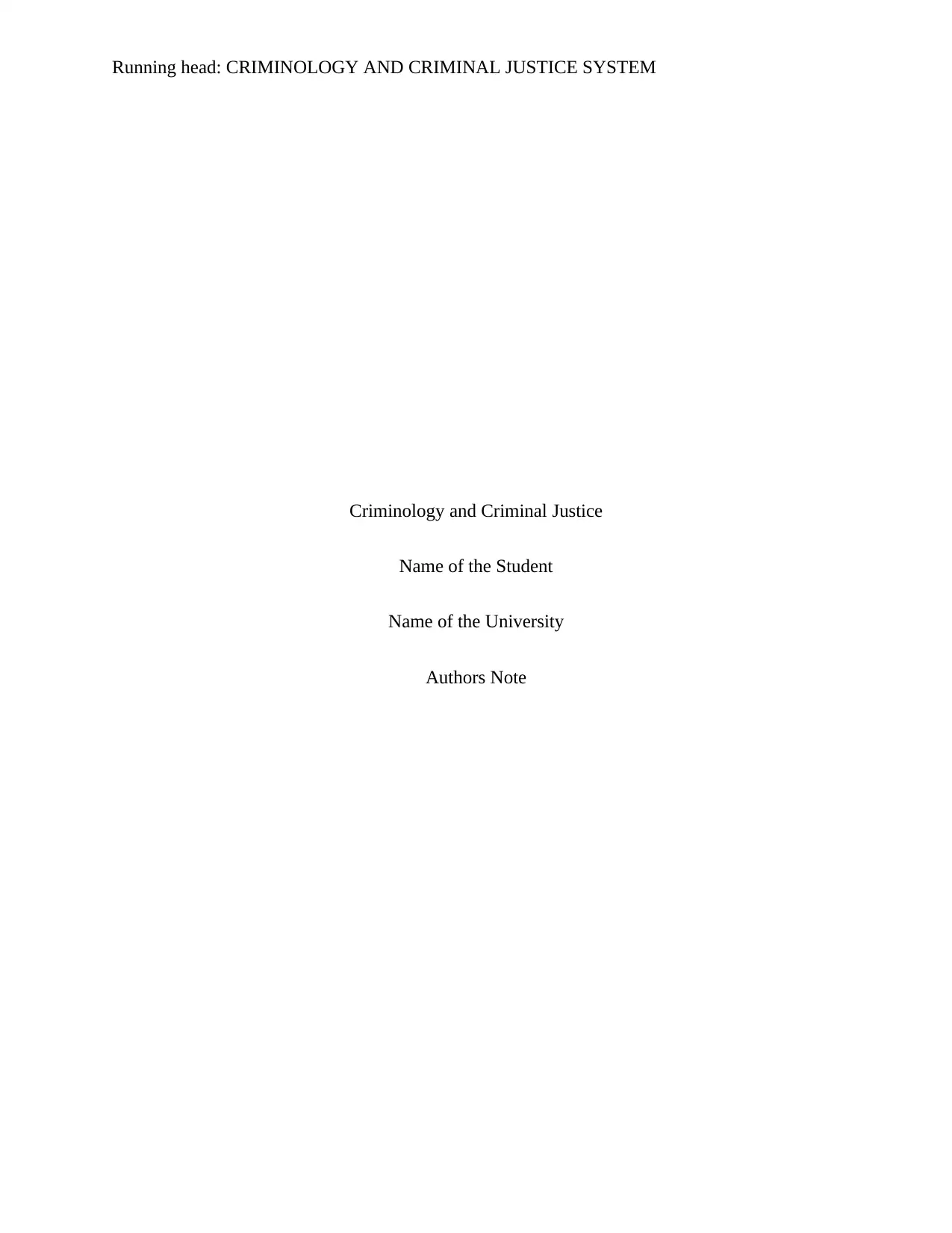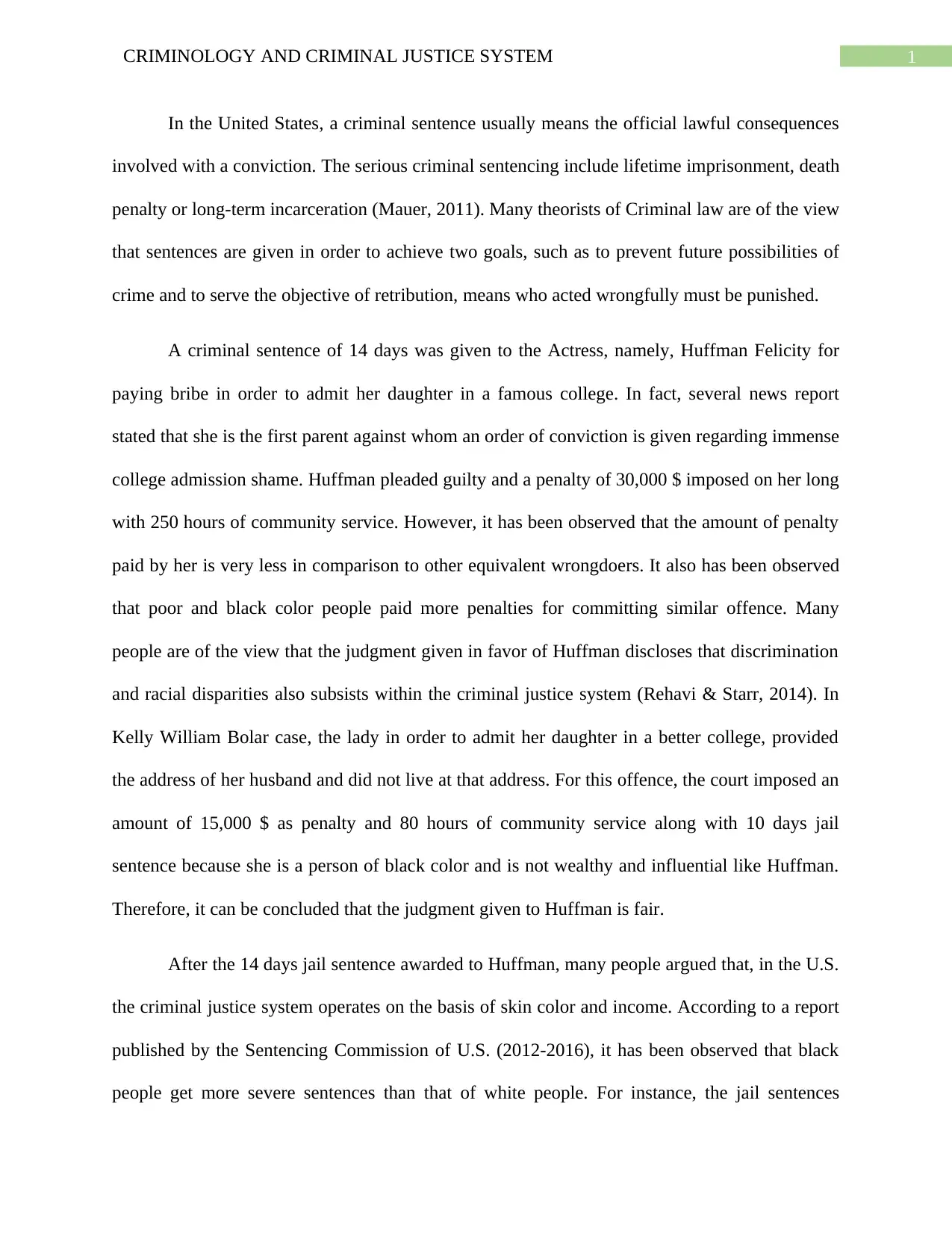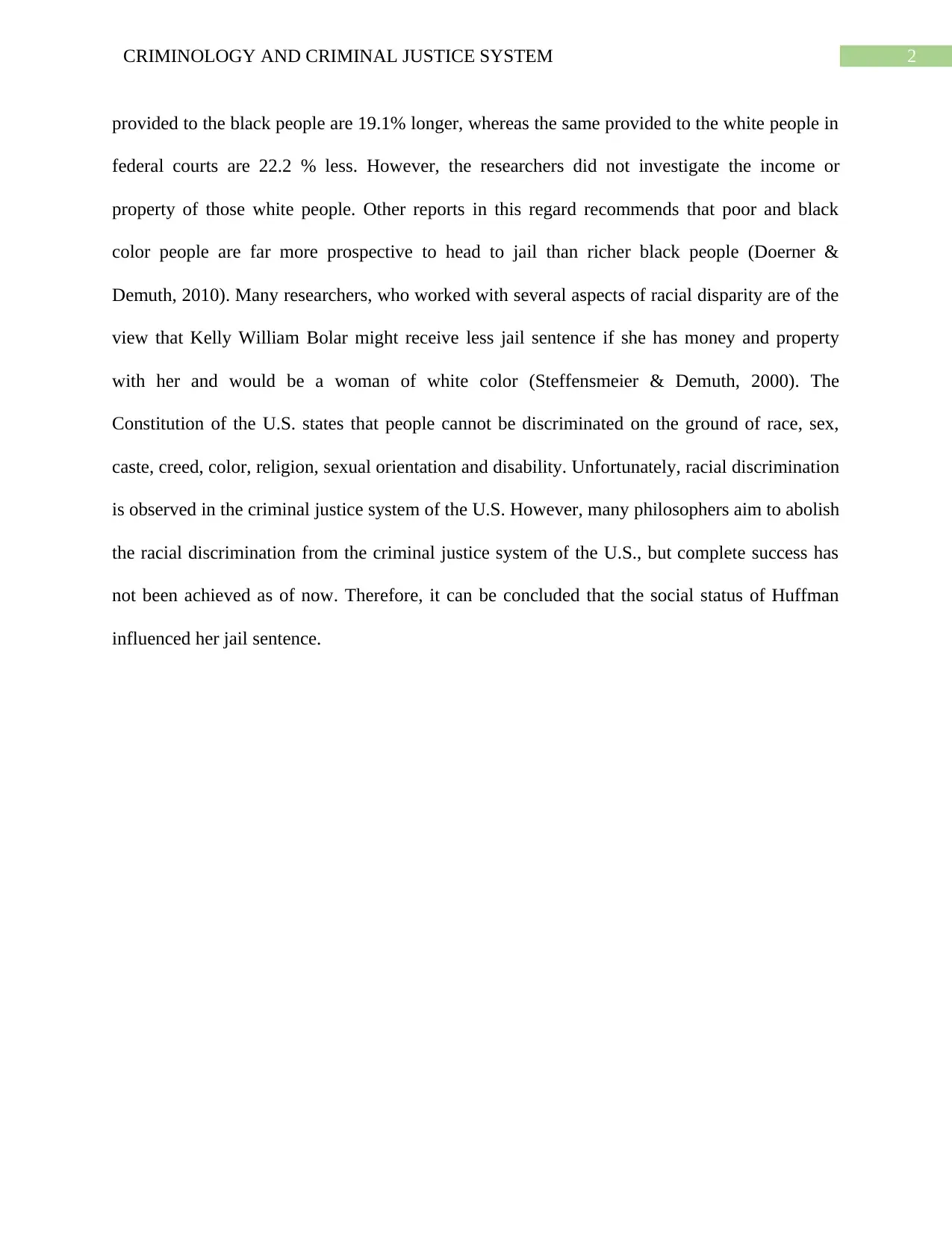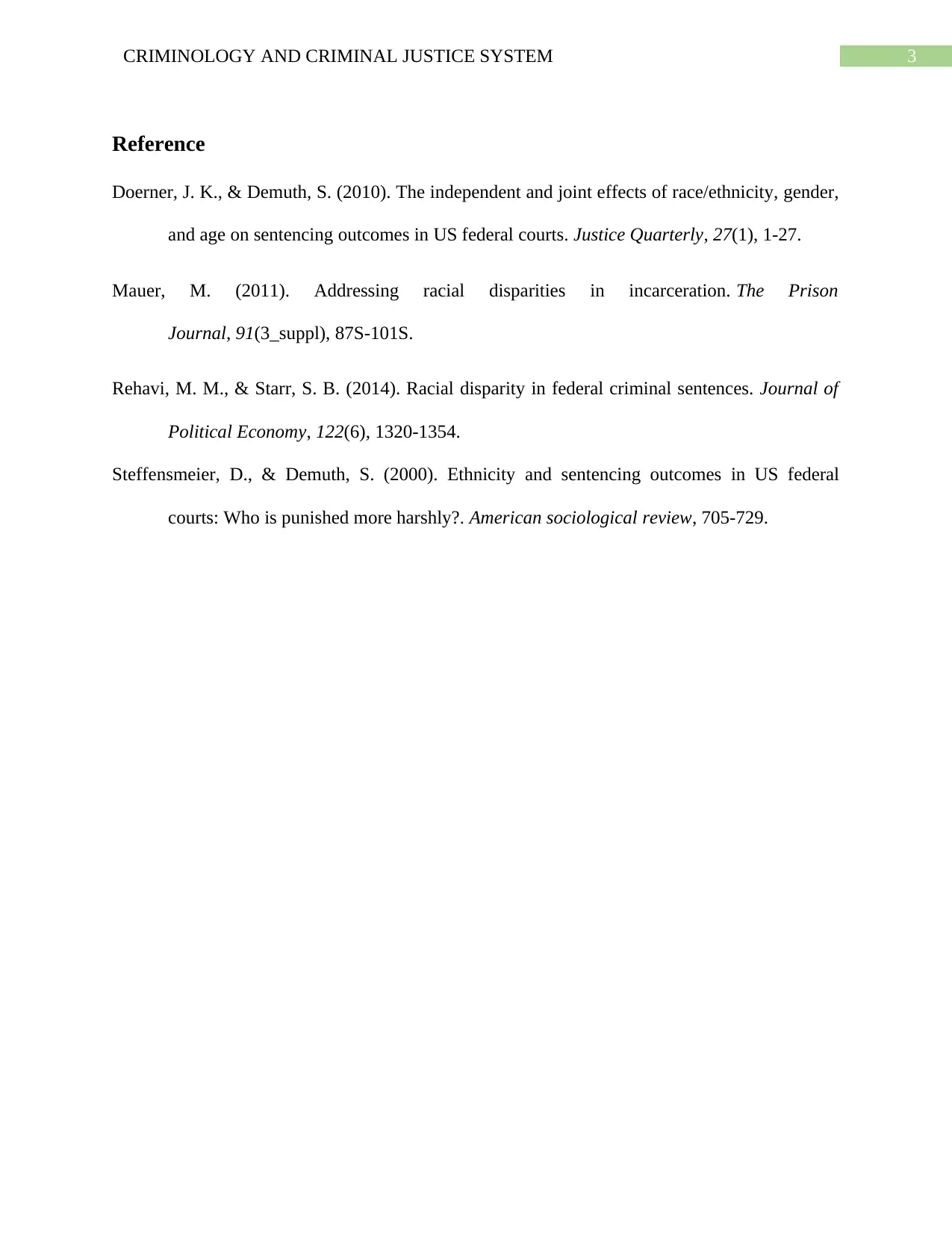Criminology and Criminal Justice System: Sentencing and Bias Analysis
VerifiedAdded on 2022/08/26
|4
|785
|16
Essay
AI Summary
This essay examines the United States criminal justice system, focusing on sentencing practices and potential biases. It begins by defining criminal sentencing and its objectives, including retribution and crime prevention. The essay then analyzes the case of actress Felicity Huffman, who received a relatively lenient sentence for her involvement in a college admissions scandal, and compares it to the case of Kelly William Bolar, highlighting disparities in sentencing based on race and socioeconomic status. Drawing upon reports from the U.S. Sentencing Commission and research on racial disparities in the justice system, the essay argues that racial discrimination influences sentencing outcomes. The essay concludes by emphasizing that despite constitutional protections, racial discrimination persists within the U.S. criminal justice system, with the social status of defendants like Huffman significantly impacting their sentences. The essay uses references to support arguments.
1 out of 4






![[object Object]](/_next/static/media/star-bottom.7253800d.svg)